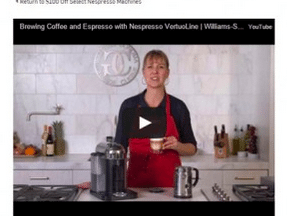An increase in the average order value for an online retailer has a strong correlation to an increase in profit. When an ecommerce retailer can sell more on each order, that retailer tends to make more profit overall.
Thus, online retailers that are able to increase average order value — AOV — should also become more profitable.
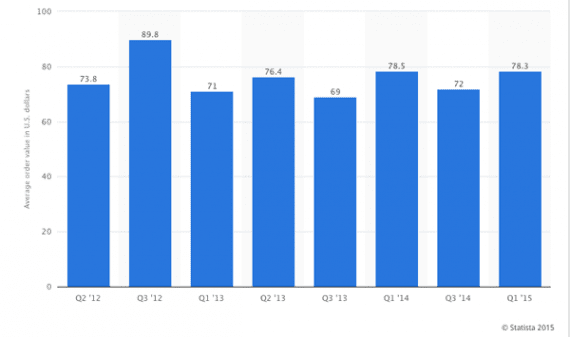
In the first quarter of 2015, the AOV for American online retailers was $78.30. Source: Statista.
In the United States, the AOV for a typical online retailer is about $78, according to Statista, a data and statistics portal. While this number will certainly vary among online retailers and industry segments, it can be a benchmark of sorts for at least some small and mid-sized businesses.
There are many strategies and, ultimately, tactics for boosting AOV, including the eight suggestions that follow.
1. Market to Repeat Customers
Returning shoppers, who are already familiar with a given online retailer, will spend more on each order. Marketing to returning customers, has both a good return on investment and a positive impact on AOV.
According to an Adobe study from 2012, “The ROI of Marketing to Existing Online Customers,” 40 percent of online revenue comes from repeat buyers, who represent just 8 percent of ecommerce site traffic.
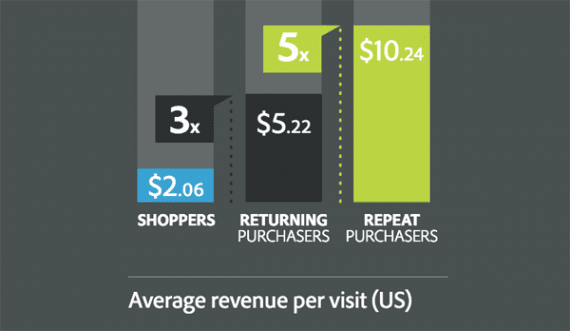
Returning shoppers (who make a second purchase) and repeat shoppers (who make three or more purchases) send more on each visit, boosting AOV. Source: Adobe.
In the U.S., a shopper returning to make a second purchase from a particular online retailer is likely to spend three times more than a new customer would, and a repeat shopper — who makes three or more purchases from the same retailer — is likely to spend five times as much as a new customer on each order. That is a big boost to AOV.
2. Offer Free Shipping at a Threshold
In the United States, an estimated 40 percent of online shoppers will change their order, adding more items, to meet a nearby threshold for free shipping, according to an AOV whitepaper from analytics firm RJMetrics.
Promote free shipping offers on every page of the site, from the home page to the checkout. Better still, show a free shipping reminder during the checkout process.

Huckberry makes a threshold-based free shipping offer on all of its pages.
3. Limited-time Offers
When shoppers feel like they will miss out, they may add more items to their shopping carts, boosting AOV.
The idea is to combine both a compelling offer, like a discount or maybe even free shipping, with a time limit. According to a case study from a few of years ago from Monetate, the personalization platform, western wear retailer Sheplers was able to boost top line sales 57 percent with a time-based offer.
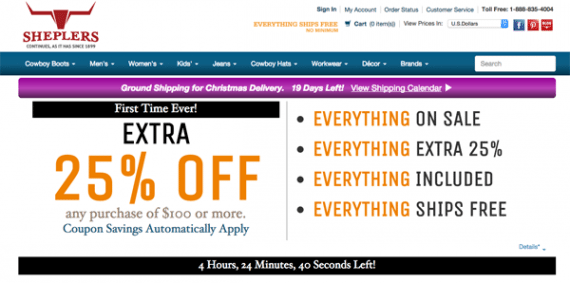
Sheplers had a 25 percent off discount that ending on November 29, 2015.
Today, Sheplers is still using the strategy. At the time of writing, the company was running an extra 25 percent off sale that ended November 29.
Try your own limited-time offer to boost AOV.
4. Offer Volume Discounts
For some products, volume discounts can significantly increase AOV. This approach tends to work best on consumable items or items that shoppers might stock up on. Think printer paper, beading supplies, or beard oil.
The discount can take a couple of forms, including a buy x get x offer, or simply a lower price when a shopper buys more of the item.
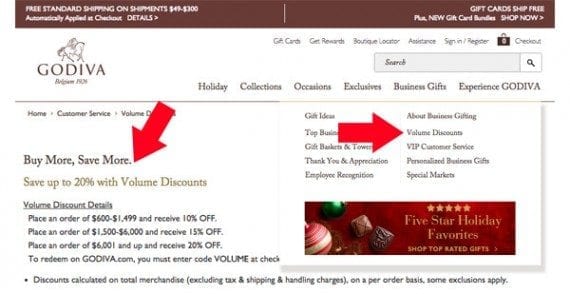
Godiva, the chocolate maker, offers its business clients a volume discount. This can save the clients money and boost Godiva’s AOV.
5. Bundle Products
When retailers bundle products, they are offering shoppers a discount for purchasing several, complementary items together, driving up AOV, whilst reducing the overhead cost associated with each item. Think shipping several items in the same or similar box.
Walmart, as an example, is bundling laptops, cases, and drives for the holidays.
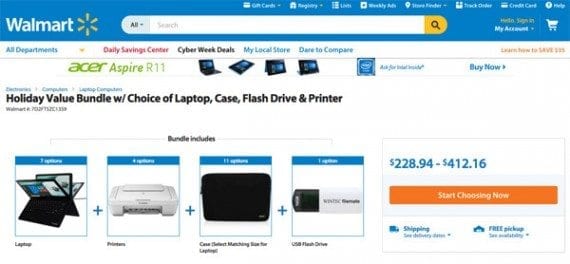
Walmart is offering a laptop bundle for the holidays.
6. Personalize Merchandising
Personalization has been one of the leading trends in ecommerce for the past few years. Typically, personalized merchandising will reply on recommendation software to suggest — upsell, cross-sell — products based on the shopper’s behavior, search history, and purchase history.
The idea is that these personalized recommendations will encourage shoppers to add these relevant items into their carts and, thereby, boost AOV.

Amazon makes personalized recommendations based on customer activity.
7. Offer Discounts with Dollar Thresholds
Similar to offering free shipping at a threshold, retailers can also offer a discount at a threshold.
As an example, a multichannel retailer in the northwestern United States has a company-wide AOV of just over $50. But the company releases a dollar threshold coupon each month.
A coupon offering shoppers $10 off of any $50 or larger purchase typically generates an AOV of more than $80. That is a significant increase over the company’s regular AOV.
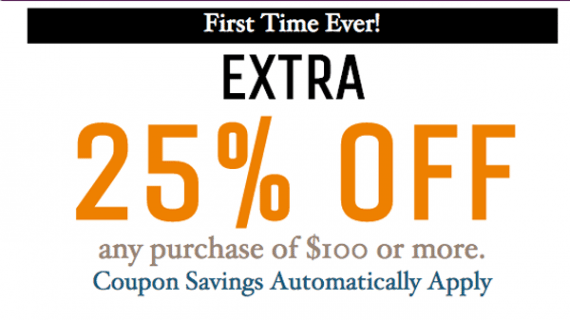
This offer gives shoppers an extra 25 percent off for spending at least $100.
8. Social Sharing, Proof
“Social proof can be used as a means of encouraging customers to buy more by instilling confidence in their purchase decisions. Social proof includes reviews from other users, celebrity and expert endorsements, or recommendations from a friend,” wrote the authors of the aforementioned RJMetrics AOV whitepaper.
Here the idea is to earn the same sort of trust that retailers get from returning or repeat shoppers, as described in tip 1. above, on the very first purchase. To achieve this, encourage shoppers to share products and purchases and highlight product reviews.
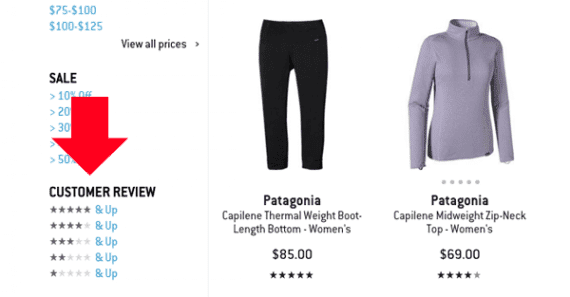
Retailer Backcountry lets shoppers filter categories by reviews and displays review information under products on its category pages.


